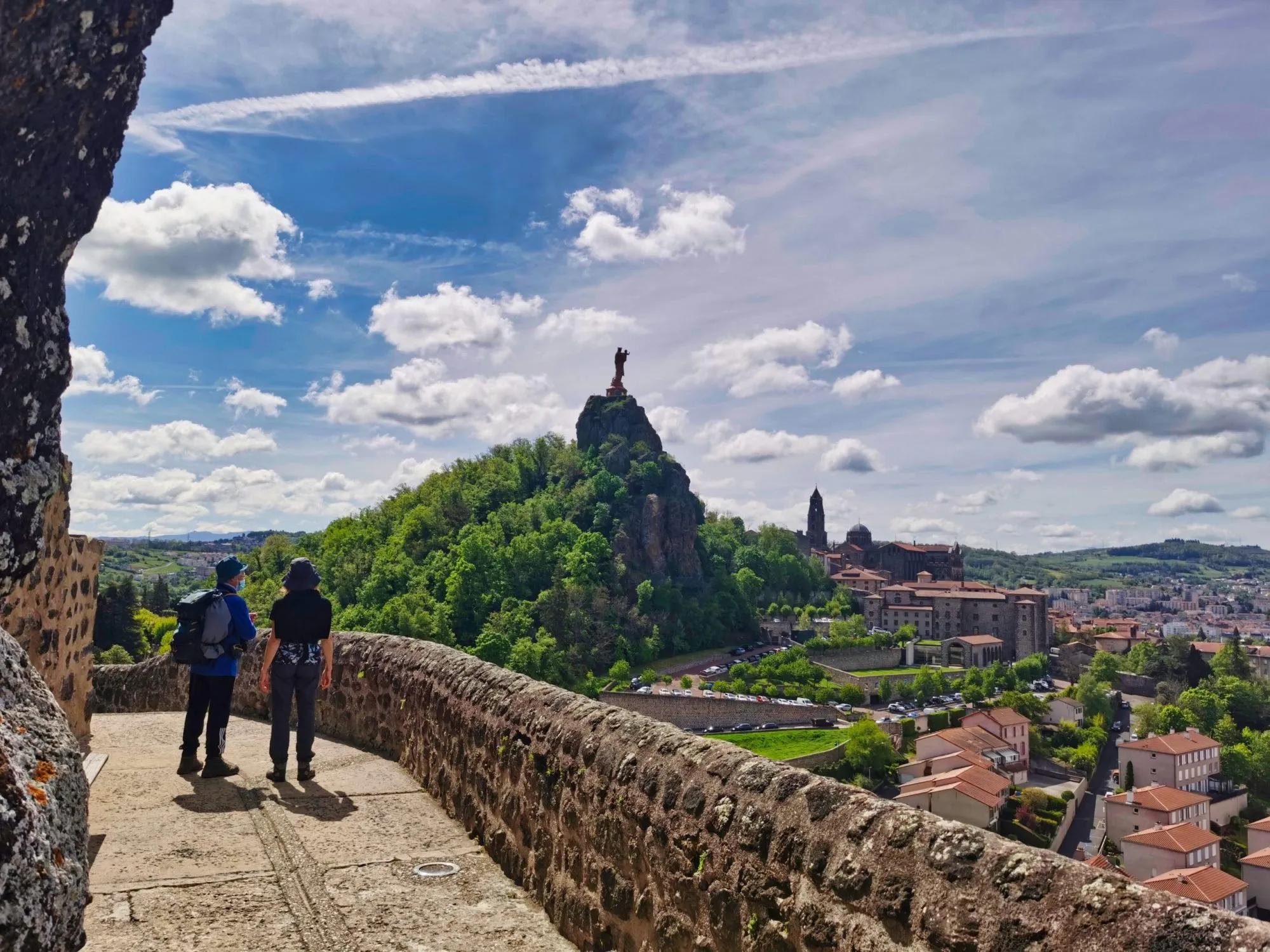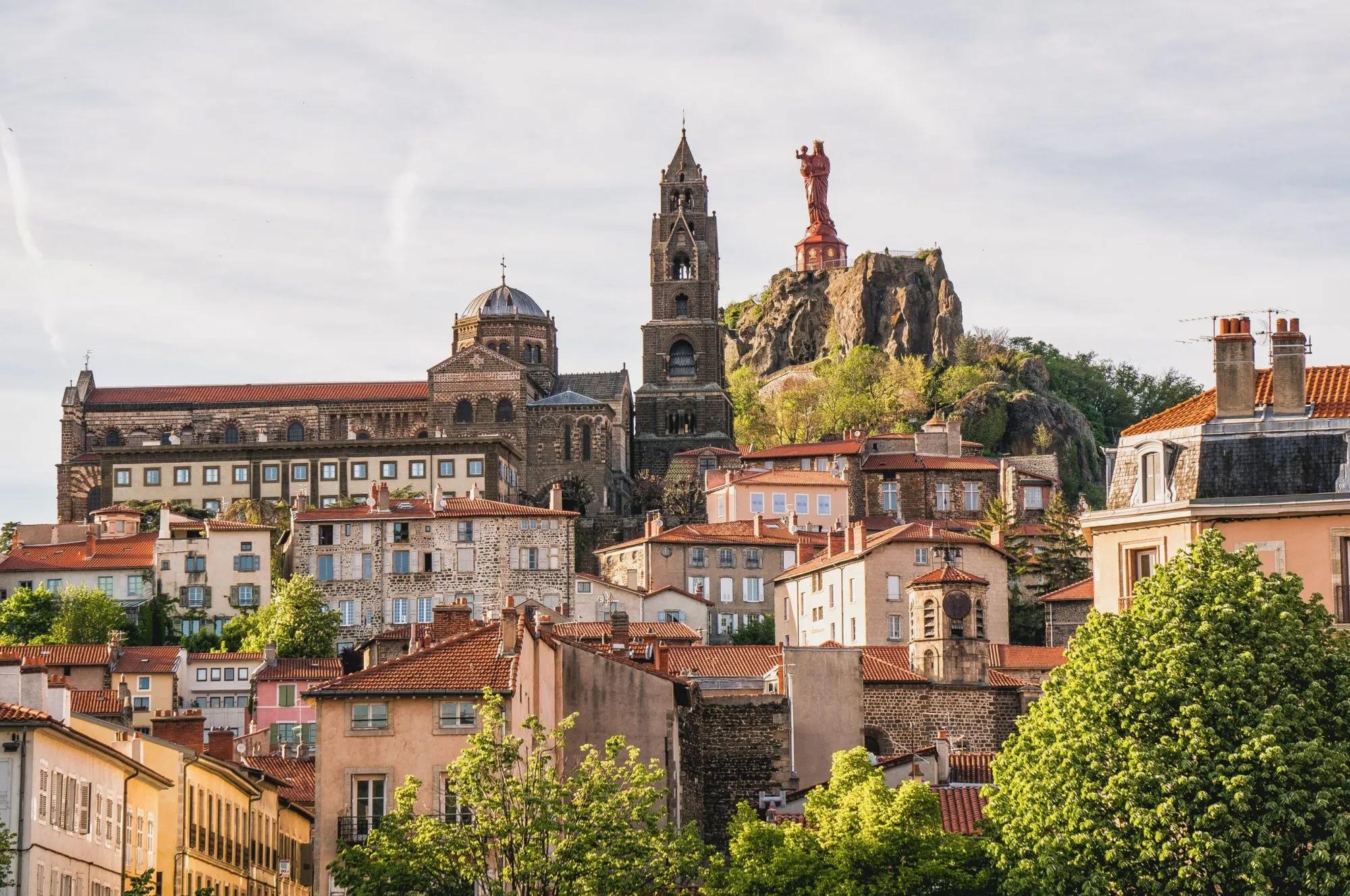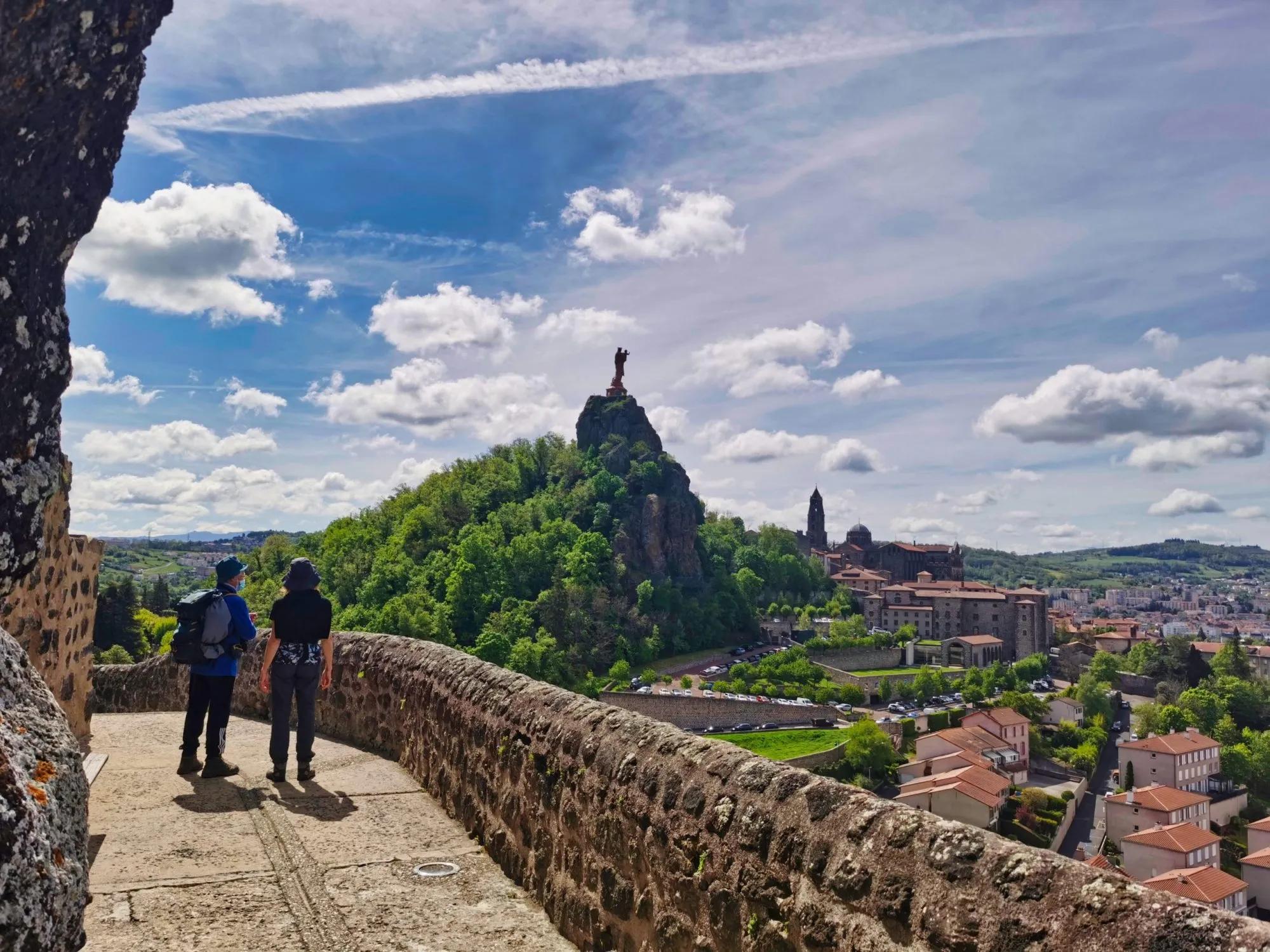








Le Puy to Aumont
6 days / 5 nights
|
Starting point
Le Puy-en-Velay
Finish point
Aumont-Aubrac
Season
From April to October
Technical level
1/5
Fitness level
4/5
Tour type
Pilgrimage
Starting point
Le Puy-en-Velay
Finish point
Aumont-Aubrac
Season
From April to October
Technical level
1/5
Fitness level
4/5
Tour type
Pilgrimage
Highlights
- Experience the spiritual and historical richness of the journey first undertaken by Godescalc, bishop of Le Puy
- Traverse the scenic Margeride Plateau, known for its expansive grassy plains and colorful moors
- Discover the architectural marvels and religious significance of ancient chapels and Roman churches
- Immerse in the cultural tapestry of France's southern regions, from quaint medieval villages to bustling small towns
- Feel the timeless connection with thousands of pilgrims who have traversed this path over centuries
- Explore the diverse landscapes, from volcanic peaks in Le Puy-en-Velay to the undulating hills of the Aubrac region
Itinerary of the trip
FREE ITINERARY
Get Your Travel Itinerary
Loved the itinerary? Enter your email below, and we'll send a copy straight to your inbox.
What’s included in the price?
Self-guided
NOT INCLUDED
OPTIONAL EXTRAS
What to bring to the tour
- Hiking shoes/boots
- 25 to 35-liter backpack
- Base layer
- Sports T-shirts
- Hiking shorts
- Hiking water-repellent pants
- Waterproof jacket
- Midlayer
- Sports socks and underwear
- Leisurewear for evenings
- Shade hat/cap
- Sunscreen
- Sunglasses
- Hiking poles
- ID card or passport
- Snacks
- Cash
- Water bottles or hydration pack
- Toiletries
Step into the timeless allure of the Camino Le Puy, a journey that weaves through the heart of France's most picturesque landscapes and historic towns.
This truncated version of the legendary pilgrimage encapsulates the essence of a thousand-year-old tradition, offering a blend of spiritual awakening and cultural immersion.
The Camino Le Puy unfurls a tapestry of breathtaking surroundings that blend natural beauty with architectural marvels. From the volcanic peaks of Le Puy-en-Velay to the serene Margeride Plateau, the route is a mosaic of contrasting landscapes.
As you meander through medieval villages, past ancient chapels, and across scenic plateaus, each step on this path not only retraces the footsteps of countless pilgrims but also invites a personal journey of discovery and reflection.
The path takes you through peaceful woodlands and over the undulating hills of the Aubrac region, each step offering a new perspective of France's majestic countryside.
As one of the oldest pilgrimage routes in Europe, the Camino Le Puy is a living testament to the enduring quest for meaning that has drawn travelers for centuries.
We'll arrange your accommodations in quaint inns and guesthouses, ensuring a comfortable rest each night. Your luggage will be transferred between stops, allowing you to walk unburdened. Our round-the-clock support ensures peace of mind, while GPS navigation and an in-depth travel booklet provide insight into the Camino Primitivo's rich tapestry.
So if strolling through history, meandering along scenic paths, and awakening to new insights sounds like your idea of a journey worth taking, then this Camino is calling you over!
Start planning today!
The sooner the better - guaranteed availability and best prices if you don't wait for too long.
Frequently Asked Questions
Ratings & Reviews

5.0 average rating

We had a lovely hike today with our guide Klemen. He personalized the tour on our needs and interests, so that we saw places we wouldn't without his experience. The hike was a little bit slippery after the rain from the last days and it went a lot upwards, but it was totally worth it! Thanks again :)


We had a lovely hike today with our guide Klemen. He personalized the tour on our needs and interests, so that we saw places we wouldn't without his experience. The hike was a little bit slippery after the rain from the last days and it went a lot upwards, but it was totally worth it! Thanks again :)


All available guidance options
Self-guided
Are you looking for a good adventure and limitless flexibility? Then you should try out a self-guided tour, perfect for independent explorers who want to set their own pace. Without the need to stick to a group schedule, you’re free to linger at scenic viewpoints while the logistics are taken care of in advance.

HASSLE-FREE
We handle itineraries, accommodations, and anything else you prefer not to deal with, so you can enjoy a carefree hike.
.svg)
TRIED & TESTED ADVENTURES
Only the best of Camino de Santiago, cherry-picked by our local team with an in-depth knowledge of the region.

SELF-GUIDED TRAVEL
Explore independently and with confidence while we keep everything running from behind the scenes.
TRUSTED BY MANY
Since 2014, we have taken care of thousands of happy customers, making it our mission to put your satisfaction first.































